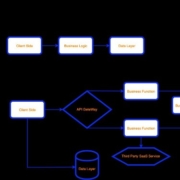As the march of technology is never-ending, the only constant we can expect is change. This is especially true considering the strides that serverless has made in the industry, especially with the release of the AWS Lambda back in 2014. Upon its release, AWS Lambda was quick to take front and center position in the FaaS services making up the core of serverless applications. It was rightly heralded as one of the most important releases within the domain. This further lead to an array of best practices dictating how applications were built using FaaS services achieving serverless capabilities.
You may also enjoy: Explaining Eventbridge Amidst the Hype
However, as the course of technology meanders in its ongoing path, new innovations are constantly redefining the way we build applications. One such innovative service announced this year was AWS EventBridge, and its release has since caused an uproar in the domain of serverless. Many blogs and posts within the community that followed the announcement characterized it as the most important announcement after the release of AWS Lambda.


